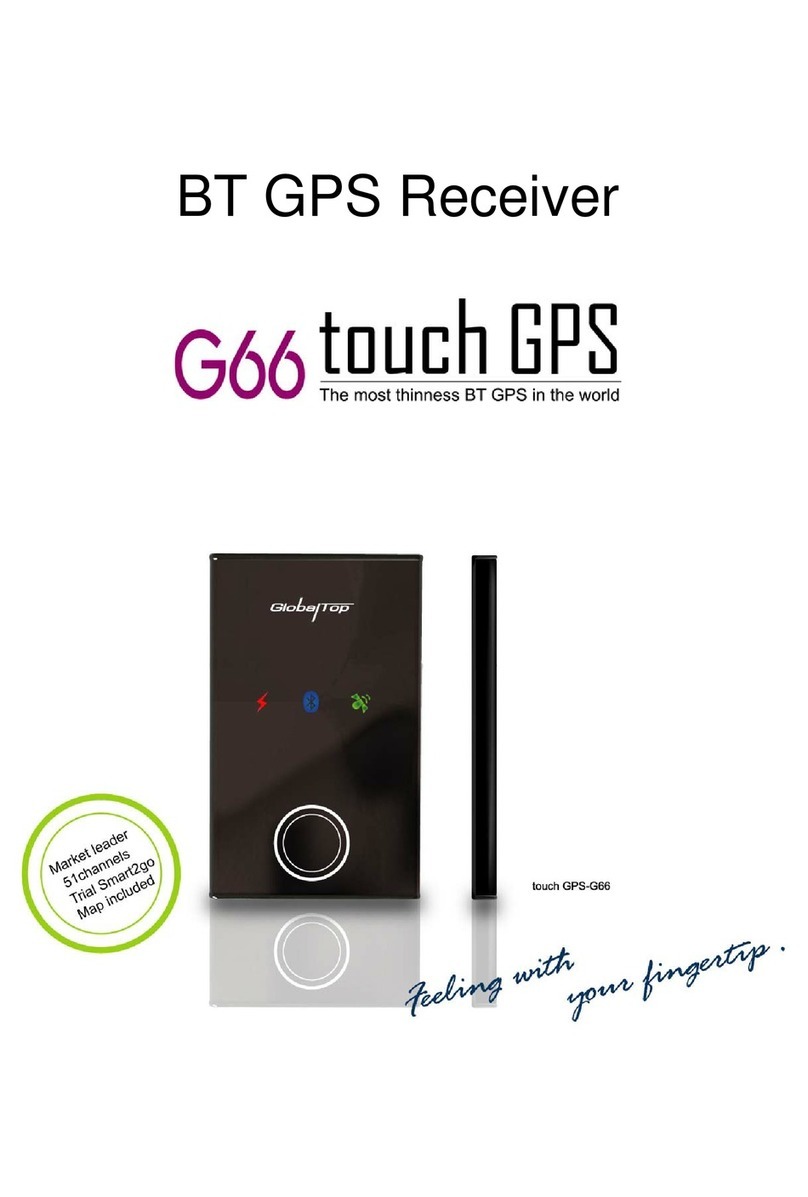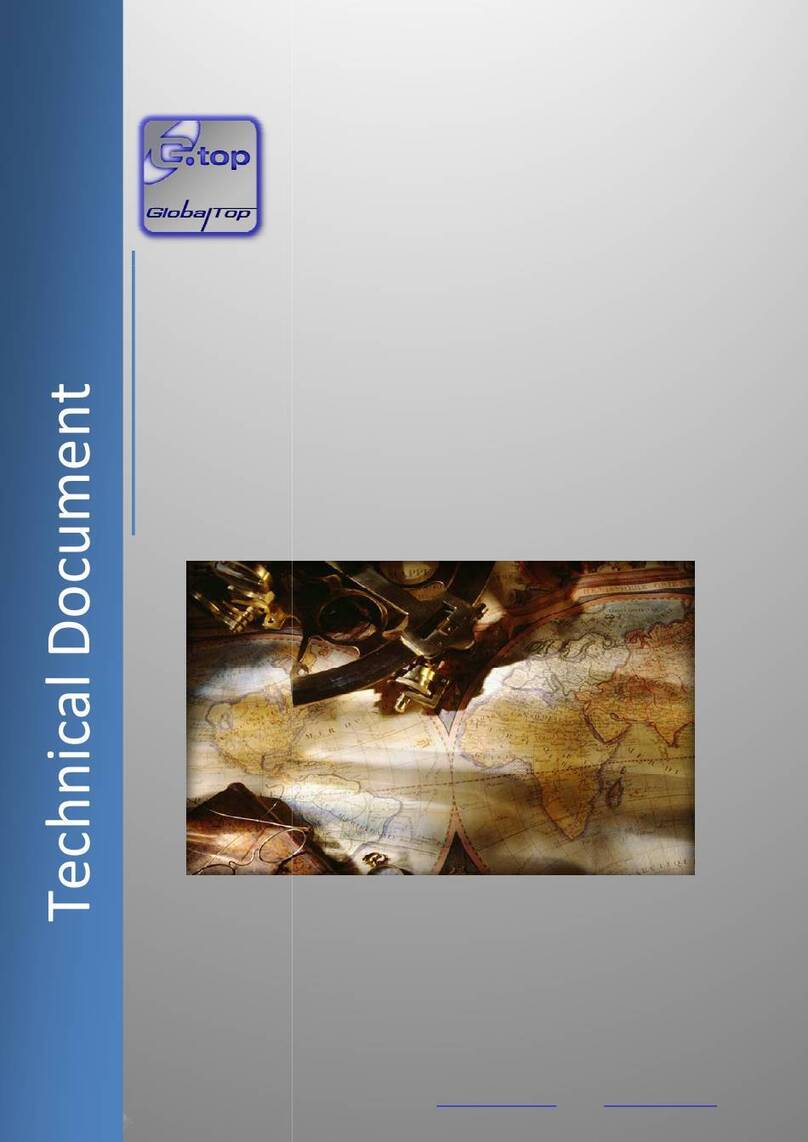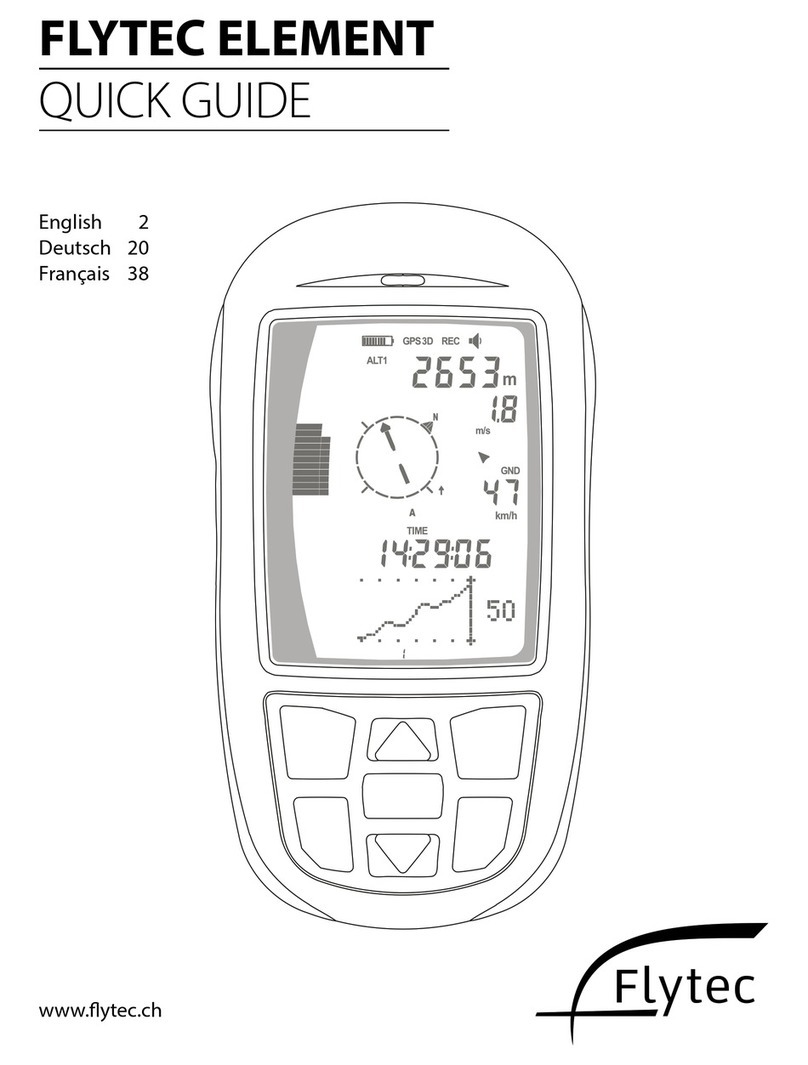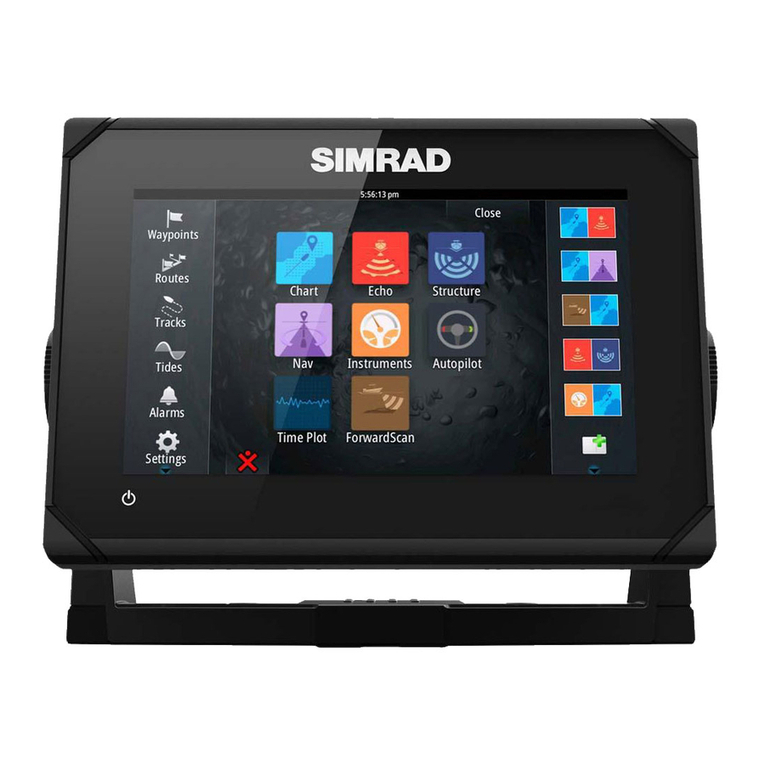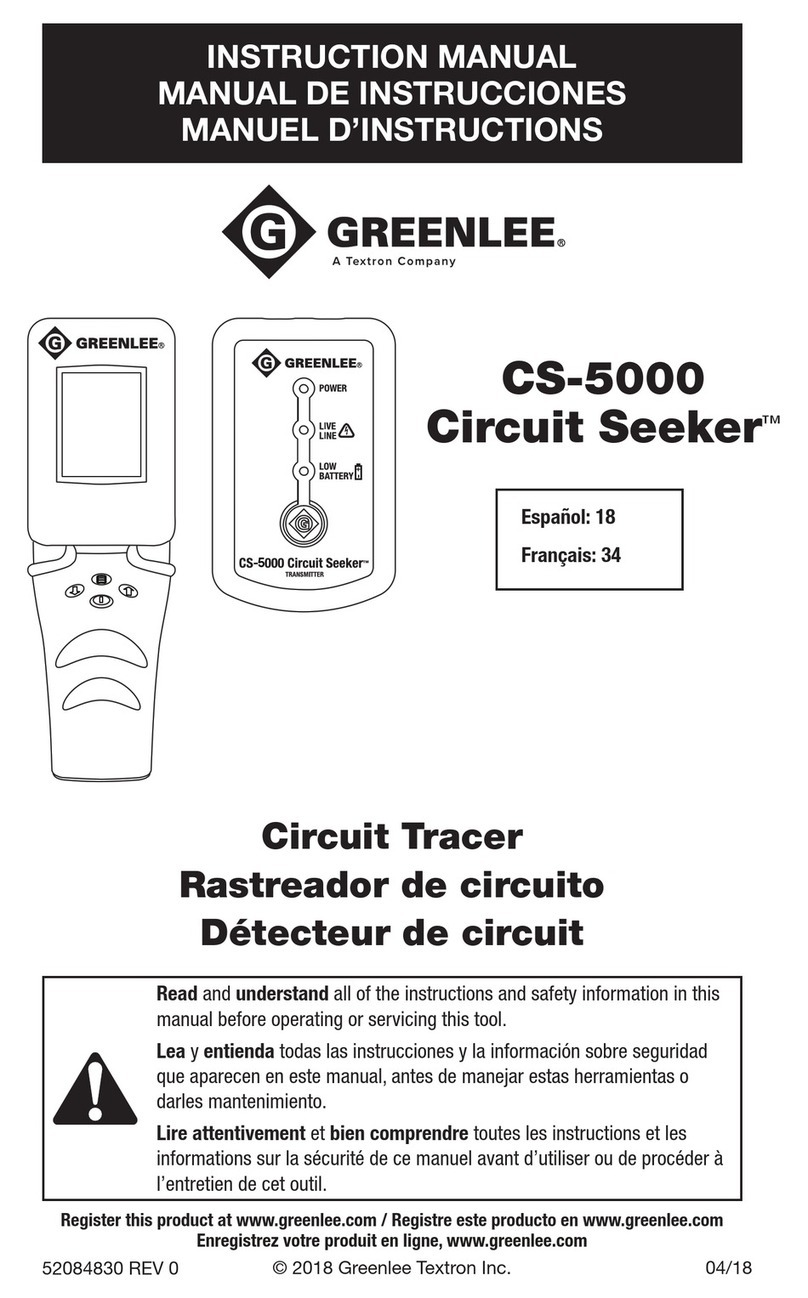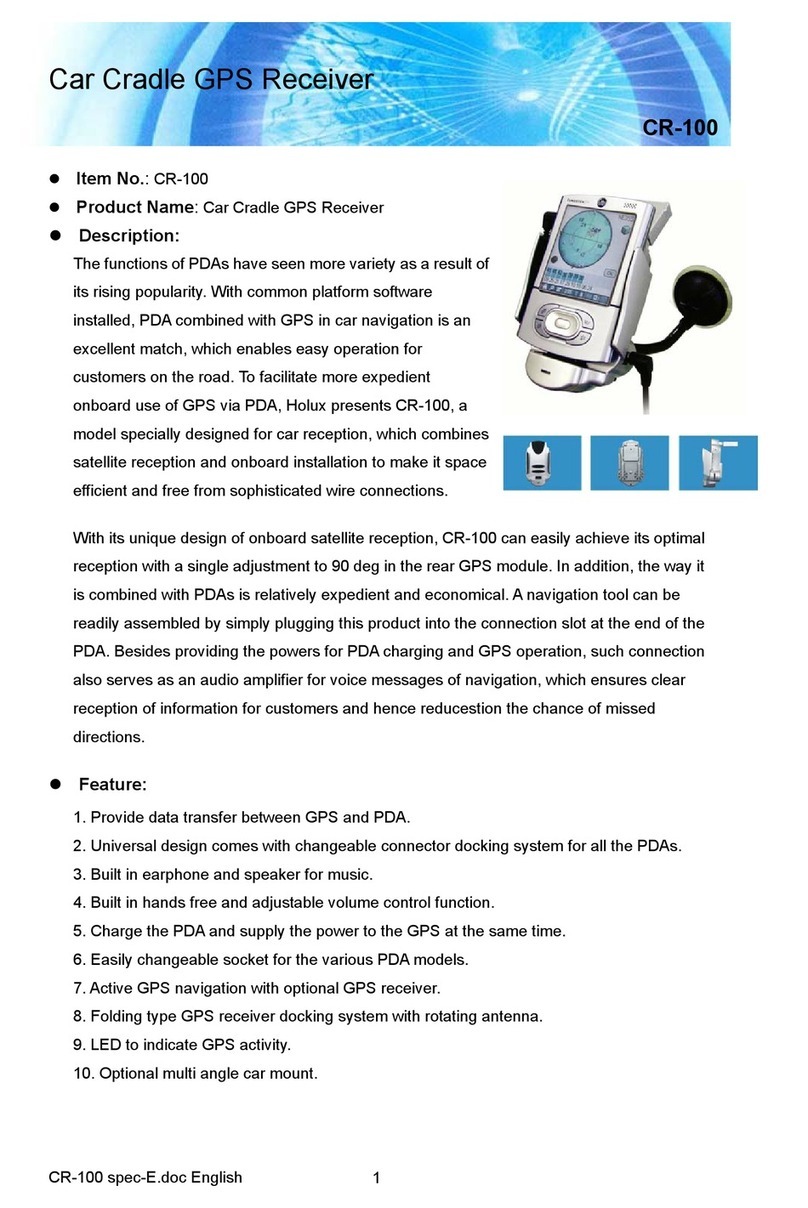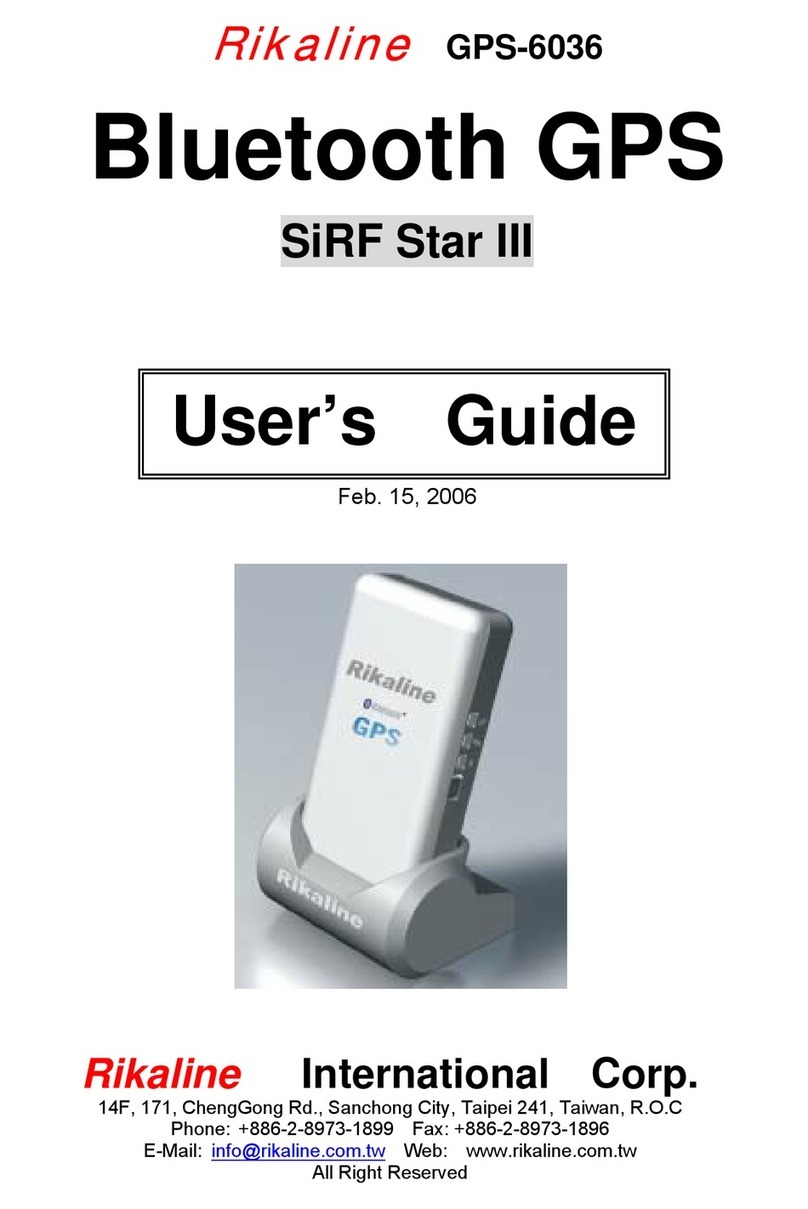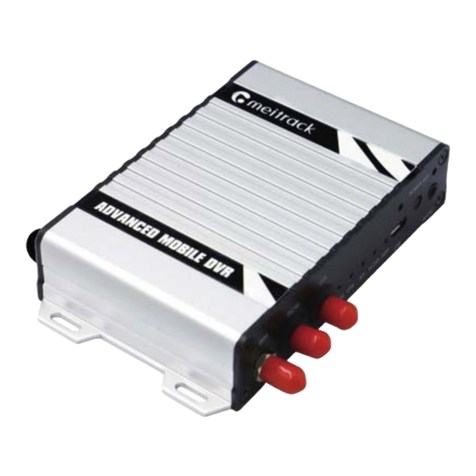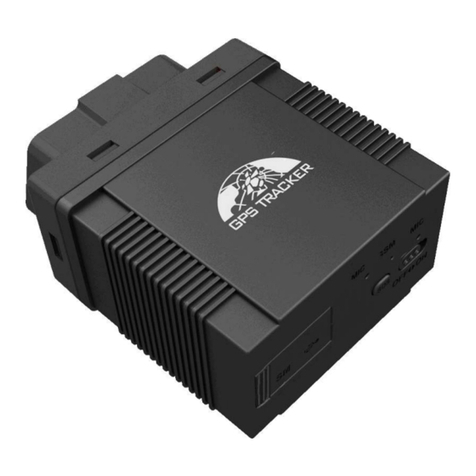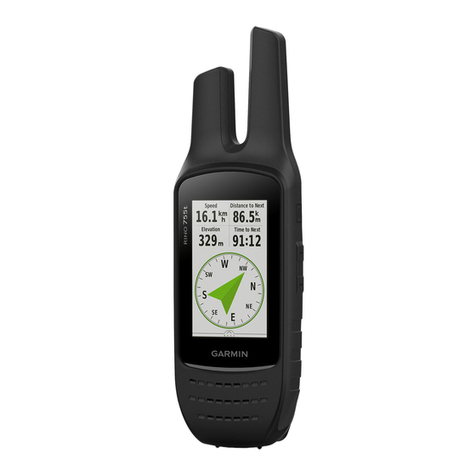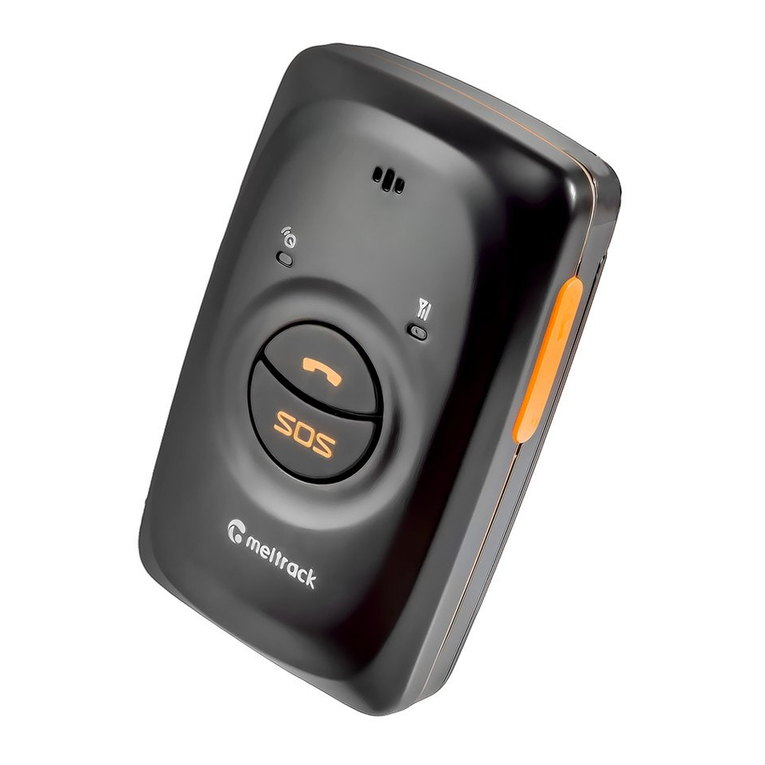GlobalTop MT3333 Series Installation and operating instructions

Ver. A05
This document is the exclusive property of GlobalTop Tech Inc. and should not be distributed, reproduced, into any other format without prior
permission of GlobalTop Tech Inc. Specifications subject to change without prior notice.
Copyright © 2013 GlobalTop Technology Inc. All Rights Reserved.
No.16 Nan-ke 9th Rd, Science-Based Industrial Park, Tainan, 741, Taiwan, R.O.C.
Tel: +886-6-5051268 / Fax: +886-6-5053381 / Email: sales@gtop-tech.com / Web: www.gtop-tech.com
GlobalTop Technology Inc.
GNSS Module
Application Note
(MT3333 series)
Revision: A05
Technical Document
Reference layout, design tips, guides, and cautions for GlobalTop GNSS modules.

2
This document is the exclusive property of GlobalTop Tech Inc. and should not be distributed, reproduced, into any other format without
prior permission of GlobalTop Tech Inc. Specifications subject to change without prior notice.
Copyright © 2013 GlobalTop Technology Inc. All Rights Reserved.
GNSS Module Application Notes (MT3333 series)
GlobalTop Technology
Ver. A05
\
Version History
Title:
GlobalTop GNSS Module Application Notes (MT3333 series)
Subtitle:
GNSS Module
Doc Type:
Technical Document
Revision
Date
Editor
Description
A00
2013-01-23
Allen
First Release
A01
2013-08-14
Dylan
Add Gms-g6 module, Gms-b6 module
A02
2013-10-15
Dylan
Add Gmm-g3(B) module
A03
2014-10-28
Rock
Add PA6E-CAM module
A04
2014-11-12
Delano
Revised Gms-g6, Gms-b6 ground plane
A05
2015-07-07
Benson
Add Gmm-3301 module , 2.1.3(b) I2C
interface and 2.1.3(c) SPI interface

3
This document is the exclusive property of GlobalTop Tech Inc. and should not be distributed, reproduced, into any other format without
prior permission of GlobalTop Tech Inc. Specifications subject to change without prior notice.
Copyright © 2013 GlobalTop Technology Inc. All Rights Reserved.
GNSS Module Application Notes (MT3333 series)
GlobalTop Technology
Ver. A05
Table of Contents
Table of Contents .......................................................................................................................3
Attention ...................................................................................................................................4
Technical Support.......................................................................................................................5
1. Introduction ...........................................................................................................................6
2. General Rules for Design-in.....................................................................................................8
2.1 Circuit Design....................................................................................................... 8
2.1.1 Power supply VCC .................................................................................................................. 8
2.1.2 VBACKUP backup battery....................................................................................................... 9
2.1.3 UART / I2C/ SPI Serial Interface ........................................................................................... 10
(a) UART 0 (RX/TX) ........................................................................................................................ 10
(b) I2C (SCL/SDA)........................................................................................................................... 10
(c) SPI (CS/CLK/MISO/MOSI)......................................................................................................... 11
2.1.4 GND-Ground ........................................................................................................................ 11
2.1.5 Antenna Compliance Design................................................................................................ 12
2.1.6 1PPS ..................................................................................................................................... 16
2.1.7 3D_Fix .................................................................................................................................. 17
2.2 Layout Guideline................................................................................................ 19
2.2.1 Layout underneath the GNSS module ................................................................................. 19
2.2.2 Keep far away from high profile or metal canned components......................................... 21
2.2.3 Placement ............................................................................................................................ 23
2.2.4 Trace..................................................................................................................................... 23
2.2.5 Ground Segmentation.......................................................................................................... 24
2.2.6 Ground Plane ....................................................................................................................... 24
2.2.7 Metal effect on the GNSS module ....................................................................................... 27
3. Thermal Profile for SMD Modules.........................................................................................28
4. Troubleshooting ...................................................................................................................30
5. Contact.................................................................................................................................32
Appendix I: Super Capacitor Design ..........................................................................................33
Appendix II: 50 Ω Antenna Matching ........................................................................................34
Appendix III: UART to RS232 Interface ......................................................................................35
Appendix IV: UART to USB Interface .........................................................................................36
Appendix V: How to efficiently transfer 1PPS through extended distances................................. 37
Appendix VI: Caution for Reflow Soldering Process ...................................................................42
2

4
This document is the exclusive property of GlobalTop Tech Inc. and should not be distributed, reproduced, into any other format without
prior permission of GlobalTop Tech Inc. Specifications subject to change without prior notice.
Copyright © 2013 GlobalTop Technology Inc. All Rights Reserved.
GNSS Module Application Notes (MT3333 series)
GlobalTop Technology
Ver. A05
Attention
Please read carefully before you start
If the GNSS receiver is used inside buildings, tunnels, or besides any huge objects, the GNSS
signals might be weakened, cut-off or disturbed. Do not assume the receiver is malfunctioned
should the mentioned situation occurs.
This application note provides the necessary guidelines to successfully design a system using
GNSS modules. For detailed module specification, please refer to the corresponding datasheet
of GNSS module.
GNSS Module is an electrostatic-sensitive device, please do not touch GNSS module directly.
Please follow ESD safety rules when handling.
For the first time, it is strongly recommended to test the device outdoors with open sky for at
least 10 to 15 minutes to ensure full ephemeris data received.

5
This document is the exclusive property of GlobalTop Tech Inc. and should not be distributed, reproduced, into any other format without
prior permission of GlobalTop Tech Inc. Specifications subject to change without prior notice.
Copyright © 2013 GlobalTop Technology Inc. All Rights Reserved.
GNSS Module Application Notes (MT3333 series)
GlobalTop Technology
Ver. A05
Technical Support
If you encounter any technical problems or you need certain information yet you do not find it
elsewhere in our documents, please feel free to contact us. When writing to us, please follow the
form below to help us better serve you:
1. Your company name and website
2. Description of the application and system. Please kindly attach illustrations or figures where
applicable.
3. GNSS module type
4. GNSS firmware version
5. Detail descriptions of problem encountered and the conditions by which the problem
occurred. Please provide with pictures or videos files where applicable.
―Test setup descriptions
―The problem or issue addressable in the figure
Technical contact information: support@gtop-tech.com

6
This document is the exclusive property of GlobalTop Tech Inc. and should not be distributed, reproduced, into any other format without
prior permission of GlobalTop Tech Inc. Specifications subject to change without prior notice.
Copyright © 2013 GlobalTop Technology Inc. All Rights Reserved.
GNSS Module Application Notes (MT3333 series)
GlobalTop Technology
Ver. A05
1. Introduction
The purpose of this application note is to assist system developer and integrator to get familiar with
MT3333 chip based GlobalTop receiver modules during the process of implementation. This
document covers the following receiver modules:
GNSS Module Family vs Product Name
FireFly Series Product Name Titan Series Product Name
FireFly 1 Gmm-g3 Titan1 PA6E-CAM
FireFly 1b Gmm-g3(B) Titan 2 Gms-g6
FireFly X1
Gmm-3301
Titan 2B
Gms-b6
Titan3 Gms-g9
Carrion Series Product Name
Carrion 2 Gms-g6a
s
Built-in Chip
Antenna
Module
Stand Alone
Module
FireFly 1 & FireFly 1b
(Gmm-g3, Gmm-g3(B))
Carrion 2 (Gms-g6a)
FireFly X1 (Gmm-3301)

7
This document is the exclusive property of GlobalTop Tech Inc. and should not be distributed, reproduced, into any other format without
prior permission of GlobalTop Tech Inc. Specifications subject to change without prior notice.
Copyright © 2013 GlobalTop Technology Inc. All Rights Reserved.
GNSS Module Application Notes (MT3333 series)
GlobalTop Technology
Ver. A05
Titan 3 (Gms-g9)
Titan 2 (Gms-g6) Titan 2B (Gms-b6)
Built-in Patch
Antenna
Module
Titan1 (PA6E-CAM)

8
This document is the exclusive property of GlobalTop Tech Inc. and should not be distributed, reproduced, into any other format without
prior permission of GlobalTop Tech Inc. Specifications subject to change without prior notice.
Copyright © 2013 GlobalTop Technology Inc. All Rights Reserved.
GNSS Module Application Notes (MT3333 series)
GlobalTop Technology
Ver. A05
2. General Rules for Design-in
In order to obtain optimal GNSS performances, there are some rules which require attentions for
applying the GNSS modules.
2.1 Circuit Design
Compatible Models: Gmm-g3, Gmm-g3(B), Gms-g6a, Gms-g9, Gms-g6, Gms-b6,PA6E-CAM,
Gmm-3301
2.1.1 Power supply VCC
Providing a clean and stable power supply is required for the GNSS module to obtain high-quality
performance. Unstable power source will cause a significant negative impact on the performance. To
achieve high-quality performance, the VCC ripple must be restricted under 50mVpp
(1) Add ferrite bead, power choke or low pass filter for power noise reduction.
. Here are some
important suggestions for main power circuit design:
(2) Linear regulator is better than switch DC/DC power supplier in ripple.
(3) Use enough decoupling capacitors beside VCC for stable voltage.
Power design for GNSS module

9
This document is the exclusive property of GlobalTop Tech Inc. and should not be distributed, reproduced, into any other format without
prior permission of GlobalTop Tech Inc. Specifications subject to change without prior notice.
Copyright © 2013 GlobalTop Technology Inc. All Rights Reserved.
GNSS Module Application Notes (MT3333 series)
GlobalTop Technology
Ver. A05
2.1.2 VBACKUP backup battery
Compatible Models: Gmm-g3, Gmm-g3(B), Gms-g6a, Gms-g9, Gms-g6, Gms-b6,PA6E-CAM,
Gmm-3301
There are 2 applications in applying VBACKUP to the GNSS modules.
Application 1:
Backup power can be used when the main power is not supplied to keep RTC running and receiving
navigation data. When VCC goes off for a short term, with this backup power, the GNSS module is
capable of succeeding a faster TTFF, shorter Time-to-First-Fix, and short hot start time after the
power is regained.
For most system, it is recommended to provide the module with backup power (e.g. Li-Ion
rechargeable coin battery, super cap). See the figure provided below for reference design.
For “super capacitor reference design”, please refer to Appendix I.
The module has a built-in battery recharge circuit. It charges the rechargeable coin battery while the
module is powered on.
Application 2:
GNSS module has a built-in charging circuit which charges the rechargeable coin battery. If the coin
battery is not installed at the VBACKUP, the module will still function but only that the module will
perform cold start at each power on event.
Built-in a charging circuit for GNSS module
The rechargeable coin battery to the VBACKUP of the module

10
This document is the exclusive property of GlobalTop Tech Inc. and should not be distributed, reproduced, into any other format without
prior permission of GlobalTop Tech Inc. Specifications subject to change without prior notice.
Copyright © 2013 GlobalTop Technology Inc. All Rights Reserved.
GNSS Module Application Notes (MT3333 series)
GlobalTop Technology
Ver. A05
2.1.3 UART / I2
(a) UART 0 (RX/TX)
C/ SPI Serial Interface
Compatible Models: Gmm-g3, Gmm-g3(B), Gms-g6a, Gms-g9, Gms-g6, Gms-b6,PA6E-CAM,
Gmm-3301
(1) UART is the TTL level interface that carries the baud rate ranging from 4800 bps to 115200 bps.
(2) Placing damping resistor on the RX and TX of the GNSS module could limit the interference from
host MCU or high speed digital logics. Fine tuning the damping resistor is required to efficiently
suppress interference. Since the damping resistor is wire wound component, it may function as
choke coil.
(3) Please do not connect diode(s) to RX/TX as it will decrease signal driving capability which might
adversely affect RX/TX signal level. In some cases no data output will occur.
(4) If RS232 logic-level is needed for any particular application, the level shifter will be necessary.
For more information, please refer to “UART to RS232 Interface” in Appendix III.
(5) If USB logic-level is needed for any particular application, please refer to “UART to USB Interface”
in Appendix IV for more information.
(b) I2
Compatible Model: Gmm-3301
C (SCL/SDA)
(1) The I2
(2) Pull-up resistor must be added for I2C bus:
C interface is mainly connected to external devices. MT3333 supports only slave mode
(default slave address is 0x10). MT3333 has 256bytes URAM mode and 8-byte FIFO mode for
transmitting and receiving data. The bit rate is up to 400 kb/s for fast mode. In addition, MT3333
supports manual or automatic indicator for data transfer in the slave mode. Device addresses in
the slave mode are programmable.

11
This document is the exclusive property of GlobalTop Tech Inc. and should not be distributed, reproduced, into any other format without
prior permission of GlobalTop Tech Inc. Specifications subject to change without prior notice.
Copyright © 2013 GlobalTop Technology Inc. All Rights Reserved.
GNSS Module Application Notes (MT3333 series)
GlobalTop Technology
Ver. A05
(c) SPI (CS/CLK/MISO/MOSI)
Compatible Model: Gmm-3301
(1) The serial peripheral interface port manages the communication between digital BB and external
devices. MT3333 supports only slave mode. The slave has 4 byte-register mode or URAM mode.
In the URAM mode, the transmitted and received data size is 256 bytes. The clock phase and clock
polarity are selectable. MT3333 supports manual or automatic indicator for data transfer in the
slave mode. The bit rate is up to 700kb/s.
2.1.4 GND-Ground
Compatible Models: Gmm-g3, Gmm-g3(B), Gms-g6a, Gms-g9, Gms-g6, Gms-b6,PA6E-CAM,
Gmm-3301
Make sure all GND pins of the module are connected to a good ground plane.
The separation of ground between GNSS module and the rest of the system is recommended to avoid
interference. If this setup is not possible, it is best to follow these typical rules: segmentation of
ground between digital and analogue system, high current and low current system, and different
radiation systems in general (such as GNSS and GPRS)
One way to segment the ground is to place digital and noise component at one corner of the board,
while placing analog and quiet components at the opposite corner of the board. Make sure there is
no crossing of microstrip or current between the two component sets with ground of each sets to be
connected to one point only.
Another way is to place the two different sets at different layers of the board while the ground of
each layer is connected to one point only which is preferable located at the border of the board
practically.

12
This document is the exclusive property of GlobalTop Tech Inc. and should not be distributed, reproduced, into any other format without
prior permission of GlobalTop Tech Inc. Specifications subject to change without prior notice.
Copyright © 2013 GlobalTop Technology Inc. All Rights Reserved.
GNSS Module Application Notes (MT3333 series)
GlobalTop Technology
Ver. A05
2.1.5 Antenna Compliance Design
Compatible Models: Gmm-g3, Gmm-g3(B), Gmm-3301
GNSS antenna is a receiving part of the device to acquire weak GNSS signal from sky. Popular solution
would be ceramic patch antenna because of its small form factor with low cost. There are two types
of antennas: passive and active.
Passive antenna is solely by itself without signal amplifier such as LNA. Examples are patch antenna
and chip antenna. If you have your own patch antenna, it is required to get it fine tuned for the
specific module model to obtain the best possible signal strength.
External antenna is a standalone device integrates with LNA and patch antenna with a RF cable for
higher gain and better performance than that of passive antenna.
Antenna can be chosen according to radiation efficiency, radiation pattern, gain, bandwidth, form
factor and cost. Make sure the ground plane is sufficient for the antenna to operate with good
enough performance.
Designing Patch antenna with GNSS module
(1) In general, a 50Ωpatch antenna will work well with GNSS module. The antenna can be
connected to the Antenna IN pin with a 50Ωimpedance trace.
(2) Pleases keep the patch antenna far away from noise source such as switching power supply, high
speed digital logics or radar wave guide.
(3) The 50Ωtrace should be kept as short as possible to reduce the chance of picking up the noise
from air and PCB. A simple direct-line trace is most recommended.
(4) If needed, a matching circuit could be placed between patch antenna and GNSS module. The
matching circuit design should be discussed with the module and patch antenna maker.
(5) For 50 Ω matching, please refer to “”50 Ω Antenna Matching“ in Appendix II.
PCB trace design for antenna impedance matching
RF Trace 50Ω

13
This document is the exclusive property of GlobalTop Tech Inc. and should not be distributed, reproduced, into any other format without
prior permission of GlobalTop Tech Inc. Specifications subject to change without prior notice.
Copyright © 2013 GlobalTop Technology Inc. All Rights Reserved.
GNSS Module Application Notes (MT3333 series)
GlobalTop Technology
Ver. A05
Module
Antenna_IN
VANT
RF
External Antenna
Antenna
Power
Select External Antennal architecture with GNSS module
An external antenna needs DC power to function. A typical method is to feed DC power into the RF
trace. The external antenna can extract the power from the RF trace; thus we can use the RF trace to
transport both RF signal and DC voltage. To fully achieve this, we use a RF chock coil to couple the DC
power to RF trace.
For your reference, in general, GlobalTop modules provide the circuit connecting external antenna
and power feeding method as depicted in the figure below. Please select the module prudently while
applying the design with an external antenna.
Mode 1(i.e. Gmm-g3, Gmm-g3(B)) : The power supply for the external antenna needs to be
externally fed into the module via the VANT pin and connect antenna to Antenna IN pin.
Mode 1: (Internal chock coil)
Mode 2 (i.e. Gmm-3301): the power supply needs to be externally provided and it is
connected directly to the External Antenna via chock coil.
Note: Chock Coil for reference: LQG15HS33NJ02D (Murata)
Mode 2: (External chock coil)
Power Feeding Configuration

14
This document is the exclusive property of GlobalTop Tech Inc. and should not be distributed, reproduced, into any other format without
prior permission of GlobalTop Tech Inc. Specifications subject to change without prior notice.
Copyright © 2013 GlobalTop Technology Inc. All Rights Reserved.
GNSS Module Application Notes (MT3333 series)
GlobalTop Technology
Ver. A05
Module
Mode
Gmm-g3,
Gmm-g3(B) Gmm-3301
Mode 1
(Internal chock coil)
Mode 2
(External chock coil)

15
This document is the exclusive property of GlobalTop Tech Inc. and should not be distributed, reproduced, into any other format without
prior permission of GlobalTop Tech Inc. Specifications subject to change without prior notice.
Copyright © 2013 GlobalTop Technology Inc. All Rights Reserved.
GNSS Module Application Notes (MT3333 series)
GlobalTop Technology
Ver. A05
External Antenna of Specification
When selecting your external antenna, reference the specification shown in the table below.
For Gmm-g3 module user, you will need GPS/GLONASS External Antenna
For Gmm-g3(B) module user, you will need Beidou/GPS External Antenna

16
This document is the exclusive property of GlobalTop Tech Inc. and should not be distributed, reproduced, into any other format without
prior permission of GlobalTop Tech Inc. Specifications subject to change without prior notice.
Copyright © 2013 GlobalTop Technology Inc. All Rights Reserved.
GNSS Module Application Notes (MT3333 series)
GlobalTop Technology
Ver. A05
2.1.6 1PPS
Compatible Models: Gmm-g3, Gmm-g3(B), Gms-g6a, Gms-g9, Gms-g6, Gms-b6,PA6E-CAM,
Gmm-3301
1PPS signal is an output pulse signal used for timing application. Its electrical characteristics are:
Low Voltage level: 0~0.4V
High Voltage level: 2.8~3.1V
Period: 1s
Accuracy (jitter):±10ns
100ms pulse width duration (Firmware customization for pulse width duration is available)
1PPS signal and its pulse width with 100ms duration
Free run 1PPS output before 3D_FIX
GlobalTop standard GNSS module outputs 1PPS signal after the module obtained 3D_FIX. This is a
factory default setting.
For an always 1PPS signal output configuration, regardless of 3D_Fix or not, this is available to our
customer via firmware customization service. Please be noted that the accuracy before 3D_Fix on the
1PPS is a free run and will lock until GPS 3D_Fix.
Cable delay compensation
In some cases a long distance connection (~300m) may be needed. For a timing application, the cable
length is critical.
For more information on 1PPS signal transmission delay please refer to Appendix V.
Delay caused by the cable length could be compensated with firmware setting. Please contact us if
that is useful for your implementation.

17
This document is the exclusive property of GlobalTop Tech Inc. and should not be distributed, reproduced, into any other format without
prior permission of GlobalTop Tech Inc. Specifications subject to change without prior notice.
Copyright © 2013 GlobalTop Technology Inc. All Rights Reserved.
GNSS Module Application Notes (MT3333 series)
GlobalTop Technology
Ver. A05
LED indicator for 1PPS signal
For 1PPS LED indication, user may connect a LED indicator with a 330ohm resistor in series.
1PPS signal design for IO
2.1.7 3D_Fix
Compatible Model: Gmm-g3, Gmm-g3(B), Gms-g6a, Gms-g9, Gms-g6, Gms-b6,PA6E-CAM
3D_Fix signal is an output pulse signal used for GNSS fix application. Its electrical characteristics are:
Low Voltage level: 0~0.4V
High Voltage level: 2.8~3.1V
Source current (Max.): 14mA, sink current 14mA
Signal output before 2D Fix:
Duration: 1 second high and 1 second low.
Period: 2s
(Firmware customizable)
Signal output after 2D or 3D Fix:
Duration: Constant low level output
(Firmware customizable)

18
This document is the exclusive property of GlobalTop Tech Inc. and should not be distributed, reproduced, into any other format without
prior permission of GlobalTop Tech Inc. Specifications subject to change without prior notice.
Copyright © 2013 GlobalTop Technology Inc. All Rights Reserved.
GNSS Module Application Notes (MT3333 series)
GlobalTop Technology
Ver. A05
For 3D_Fix indication, user may connect a LED with a 330ohm resister in series in two ways showing in
the two figures below.
3D_Fix signal design for IO
(LED ON when high, LED OFF when low)

19
This document is the exclusive property of GlobalTop Tech Inc. and should not be distributed, reproduced, into any other format without
prior permission of GlobalTop Tech Inc. Specifications subject to change without prior notice.
Copyright © 2013 GlobalTop Technology Inc. All Rights Reserved.
GNSS Module Application Notes (MT3333 series)
GlobalTop Technology
Ver. A05
3D_Fix signal design for IO
(LED ON when low, LED OFF when high)
2.2 Layout Guideline
Please follow the layout guideline for the right GNSS module when design.
2.2.1 Layout underneath the GNSS module
Compatible Models: Gmm-g3, Gmm-g3(B), Gms-g6a, Gms-g9, Gms-g6, Gms-b6,PA6E-CAM, Gmm-
3301
In general, GNSS modules have high receiving sensitivity at around -165dBm. During the hardware
integration, try to avoid noise or harmonic in these bands to prevent unnecessary reception
degradation (Beidou 1561.098MHz ±2.046MHz and GPS 1572.42MHz±2MHz or GLONASS
1598.0625~1605.375MHz).
In modern GNSS positioning products, most host system contains noise generating components such
as LCD screen, MCU, high speed digital and RF system (i.e. GSM, BT, Wi-Fi, DVB-T). In order to
minimize the noise effect please design with noises source in mind and avoid it is highly
recommended.
For modules Gmm-g3, Gmm-g3(B) & Gmm-3301
Don’t leave any trace or mark underneath the GNSS module where the circled area is pointed in the
figure below.In other words, give GNSS module a clean GND plane.

20
This document is the exclusive property of GlobalTop Tech Inc. and should not be distributed, reproduced, into any other format without
prior permission of GlobalTop Tech Inc. Specifications subject to change without prior notice.
Copyright © 2013 GlobalTop Technology Inc. All Rights Reserved.
GNSS Module Application Notes (MT3333 series)
GlobalTop Technology
Ver. A05
GNSS module on a clean GND plane
For modules Gms-g9, Gms-g6, Gms-b6 & PA6E-CAM
Place a hole according to the location of RF feeding pin in module. The hole will provide an area to fit
the RF feeding pin on your system PCB and provide the appropriate hole size.
Table of contents
Other GlobalTop GPS manuals

